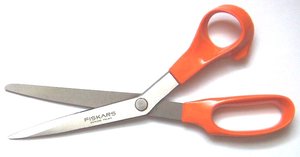Cutting the Cord of Cable TV

Cutting the cable TV cord was one of the best things I’ve done to save a lot of money and become more productive. I hate having to pay $100 per month for 200 channels, of which I’d maybe only watch 5. I also really hate watching commercials! I’m already paying for the cable TV service, why do I have to pay again by watching commercials?!
Since cable companies do not offer a la carte cable packages, where I can pick and choose which channels I want to watch and pay for, I decided I’d rather not pay $100 per month and instead find reasonable alternatives.
I “cut the cord” for cable television about 4 years ago and I haven’t regretted this decision once. There are many viable alternatives to cable TV:
- Netflix – $8 per month. Commercial free! Extensive collection of movies and TV shows, a fantastic Netflix Original series such as House of Cards
- Amazon Prime – $99 per year for Amazon Prime membership. Commercial free! Amazon Prime membership also gives you free 2 day shipping and the HBO collection!
- Hulu – free, but has commercials
I watch Netflix on an Apple TV, which is extremely simple to use. I get to watch some of my favorite TV shows commercial free, such as House of Cards, Psych, Sherlock, Sons of Anarchy, The West Wing, Breaking Bad, Doctor Who, and many others. I also have Amazon Prime. Both Netflix and Amazon Prime are great streaming services.
Here are some other streaming media devices you can use with Netflix or Amazon Prime: Google Chromecast, Amazon Fire TV
, or a Roku 3
.
Now I’m saving a lot of money and not watching any commercials – this is a win-win situation for me!
- Monthly savings: $50-100+ per month
- Yearly savings: $600-1200+ per year
Investing the Savings
I now have $1,000 more per year available for investing and becoming financially independent.
Thanks to the power of compounding interest, my $1,000 I save each year will grow at an increasing rate. Here are some compounding interest numbers to think about. I’m assuming a conservative 5% interest rate:
- Year 1: Save $1,000 @ 5%. End the year with $1,050
- Year 2: Saved $2,000 over 2 years @ 5%. End the year with $2,152.50
- Year 5: Saved $5,000 over 5 years @ 5%: End the year with $5,801.91
- Year 10: Saved $10,000 over 10 years @ 5%: End the year with $13,206.79
After 10 years I will have saved $10,000, but I will end up with $13,000. That’s a 30% gain by cutting the cable tv cord!
